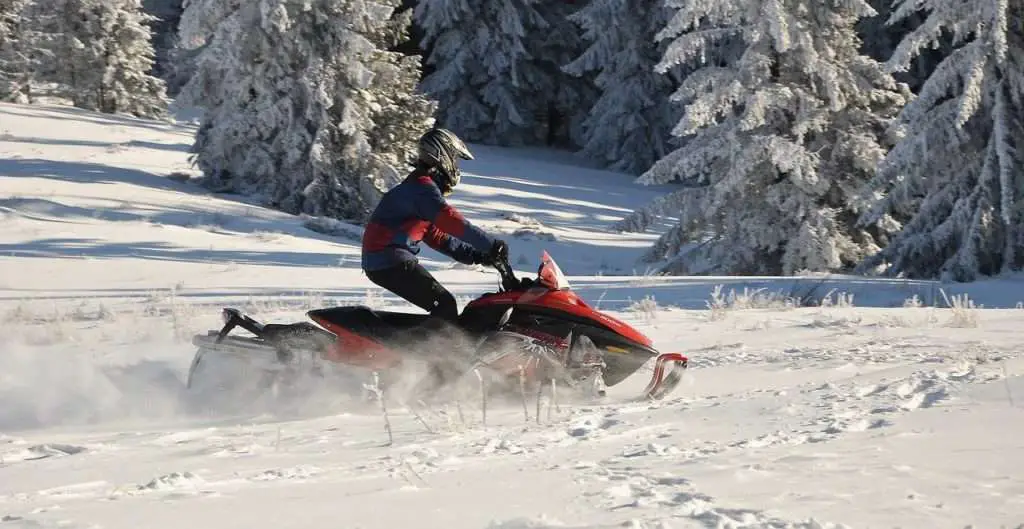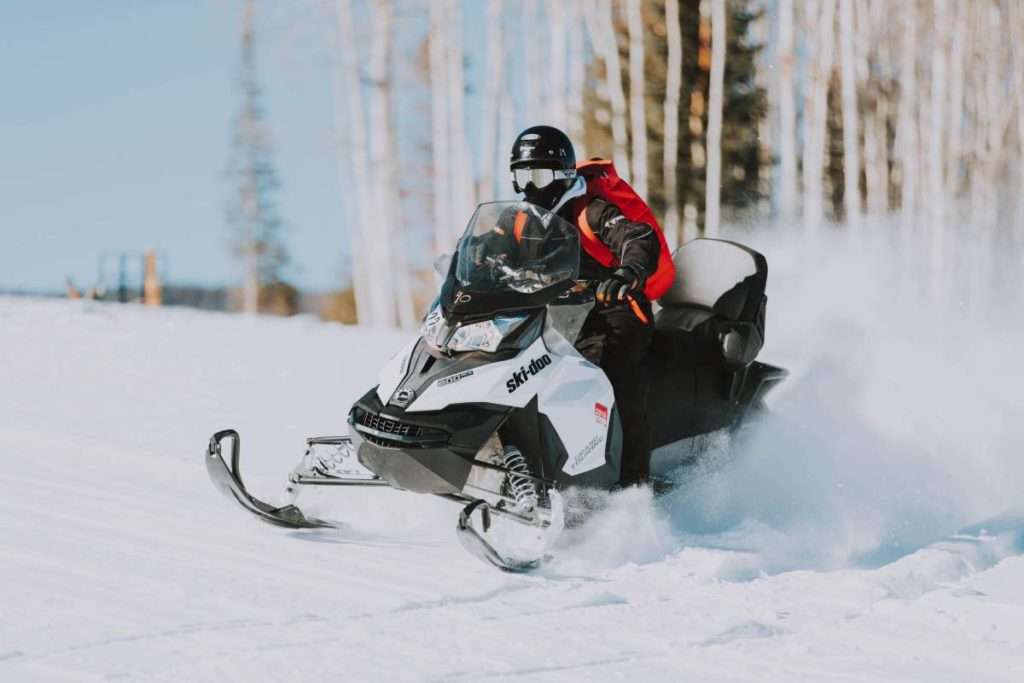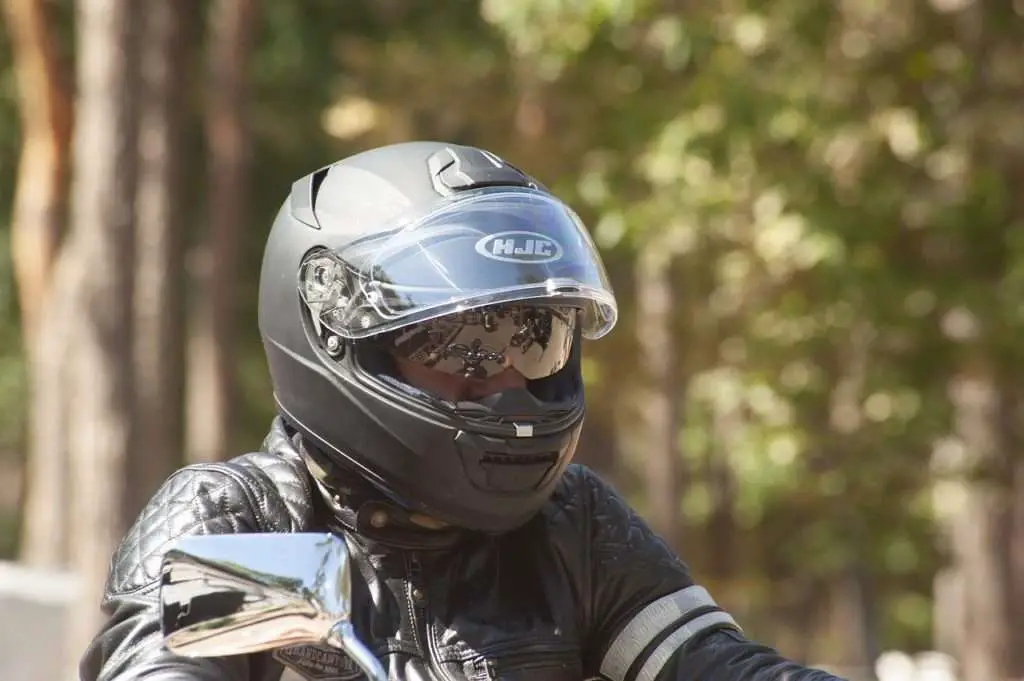Contents
Snowmobile and motorcycle riding are two of the most popular motorsports out there. For the rider to be as safe as possible, finding the right helmet is always the best option. Snowmobiles and motorcycles are both critical pieces of machinery, and helmets are often required while the vehicle is in motion. Since helmets seem to do the same thing, can you wear helmets designed for different motorsports?
Can you Wear a Snowmobile Helmet on a Motorcycle? While any helmet may seem like it will work, the truth is that snowmobile and motorcycle helmet are not built the same. The environment in which you are typically riding a snowmobile is different than a motorcycle, so the features of each serve different purposes.
Understanding the differences between a snowmobile helmet and a motorcycle helmet can make you more comfortable while riding, but it could save your life in an accident. Let’s talk about the key differences in each of the helmets and what you should look for.
Can you Wear a Snowmobile Helmet on a Motorcycle?

Many people probably think that any helmet will work when riding a motorized vehicle, but the truth is that helmets are all made differently. The helmets have similar designs, but they have distinctive features that make them ideal for the environment they are worn in. If a snowmobile helmet is all you have, technically, it can work, but you are not only going to be less protected, but you may also be more uncomfortable.
Snowmobile helmets are typically lighter than your average motorcycle helmet. This causes them not to be as protective as a motorcycle helmet, which will result in a higher risk of injury. Snowmobile helmets can keep you safe while riding them, but they are also focused on keeping you warm while you are out in the elements. Temperature is not something that the average motorcycle helmet is concerned with.
Both motorcycle and snowmobile helmets have additional features that would either serve no purpose on the other or would cause extra weight if they were installed. Snowmobile helmets have items such as electric visors to reduce fogging and freezing, which the average single pane shield found on motorcycles would not be able to do. Similarly, motorcycle helmets usually have a significant amount of padding that increases the weight and protection for the rider.
What are the Differences Between a Snowmobile Helmet and a Motorcycle Helmet?
Most people who do not own snowmobile or ride motorcycles probably think that you are good to go as long as you wear a helmet. The truth of the matter is while they are both excellent ways to prevent injury, not all helmets are made alike. Snowmobile riders are concerned with protection from the elements as well as protection from harm. Motorcycle riders need to be able to see what is going on while they are riding down the road, and they often travel at much higher speeds. Let’s talk about how each of the helmets is different.
Snowmobile Helmets

When looking to find the perfect snowmobile helmet, you may find yourself looking for features that a motorcycle helmet just does not provide. Unlike motorcycle riding, one of the biggest dangers of snowmobiling is having your helmet lens fog up, which can result in your inability to see.
The most crucial difference between the two helmets is the presence of a dual-pane shield. A dual-pane shield provides enough insulation so that your goggles will not fog or freeze while you are riding in colder temperatures. Some can even double as a sun shield to block out the sun, and to make your riding more comfortable. Here are four additional options that are not typically found on a motorcycle helmet.
- Breath Box: This is another feature that helps keep your breath and warmer air away from your shield or lens. Instead of the air just releasing, it makes sure the air is pushed down.
- Chin Curtain: Snowmobiling is a cold-weather sport. A chin curtain can wrap around your neck to keep any snow, ice, or cold air from ending up on your neck.
- Air Vents: Many snowmobile helmets are insulated to protect you from the elements. Air vents on your helmet can keep the temperature regulated so that you do not find yourself overheating or fogging your lens.
- Electric Visor: Some helmets even feature heated or electronic lenses that keep your lens at a specific temperature.
Motorcycle Helmets

Typically, motorcycle helmets are less concerned with keeping you cool, comfortable, and more concerned with keeping you as safe as possible. Although different varieties of helmets exist so that the rider can be comfortable no matter where they live or ride, they are often much more substantial than a snowmobile helmet in order to supply enough protection while riding a motorcycle.
Motorcycle helmets usually have a single pane shield that is perfect for those who are just casually riding. These lenses can even come tinted to help with the sun. A shield is one of the most important aspects of a motorcycle helmet since roads tend to have much more debris from the road and other vehicles. Motorcycle helmets also have six additional features, which makes them specialized for motorcycle riding.
- Outer Shell: Secondary to the shield, the outer layer of a motorcycle helmet could be argued as being just as important. This is a hard outer layer of the helmet, which helps to protect your head from debris or accidents.
- Impact Liner: Similar to how the outer shell of a motorcycle helmet protects your head, the impact liner is focused on absorbing as much of the impact from an accident as it can. This can be a thick layer which helps to stabilize your head to prevent damage to your brain.
- Comfort Layer: An additional layer found in a motorcycle helmet has only one purpose: to make the helmet as comfortable as it can. It helps to regulate the inside of your helmet in terms of heat and sweat, and it is often either removable or something that can be replaced if it becomes old or damaged.
- Chin Strap: In order for any helmet to adequately protect you during an accident, the helmet needs to be in a specific position. A chin strap will keep your helmet in place, and some even come padded to make them more comfortable for you to wear.
- Vents: One of the few ways that both helmets are similar is the addition of vents. Ventilation is more popular on motorcycle helmets that fall under the full-face or sport varieties. Still, almost all helmets have some element of the ventilation system to keep your helmet from getting too warm. Most of the vent options on helmets can be adjusted as well.
- Cheek Pads: Lastly, a lot of the fuller coverage helmets feature cheek pads since they are going to be resting on your face for a more extended period of time. They are similar to the comfort layer and help to regulate your body temperature and sweat levels.
Are There Any Similarities Between Them?
Aside from providing protection to the rider and helping to regulate body temperature, there is one specific similarity in both motorcycle helmets and snowmobile helmets. All helmets should be certified for safety. DOT certification, or Department of Transportation, is a mandatory regulation that all manufacturers must comply with. There is also the Snell Certification, which is optional but is usually desired by most riders. Europe, the United Kingdom, and Australia also have their own regulations and standards.
Sources:
https://carbonfiberhelmetshop.com/snowmobile-helmets-vs-motorcycle-helmets/
https://www.typhoonhelmets.com/articles/snowmobile-helmet-vs-motorcycle-helmet-/
https://mysnowmobileguide.com/snowmobile-helmet/
https://goneoutdoors.com/prevent-snowmobile-helmet-fogging-up-6070344.html
https://intrepidsnowmobiler.com/best-snowmobile-helmet/
https://motorcyclelegalfoundation.com/types-of-motorcycle-helmets/


 Are Bluetooth Helmets Worth It? The Honest Answer
Are Bluetooth Helmets Worth It? The Honest Answer  How to Pick the Best Motorcycle Helmet
How to Pick the Best Motorcycle Helmet  Ultimate Guide To The Best Motorcycle Riding Gear For Beginners
Ultimate Guide To The Best Motorcycle Riding Gear For Beginners  Ultimate Guide to Types of Motorcycle Helmets
Ultimate Guide to Types of Motorcycle Helmets 